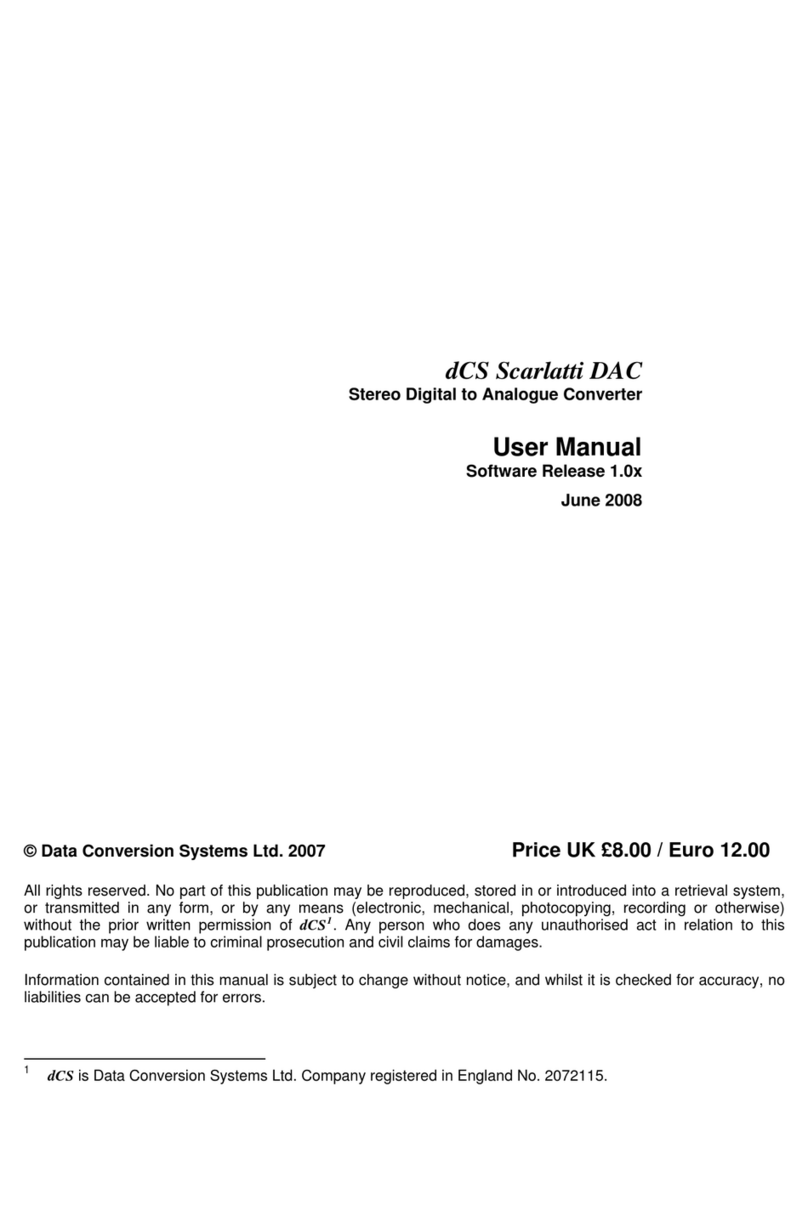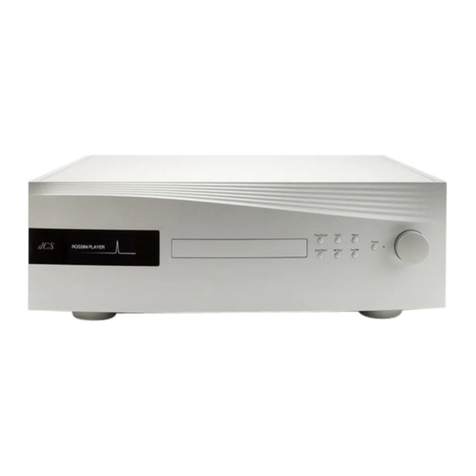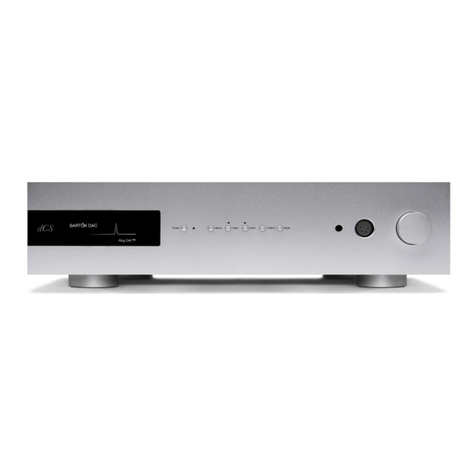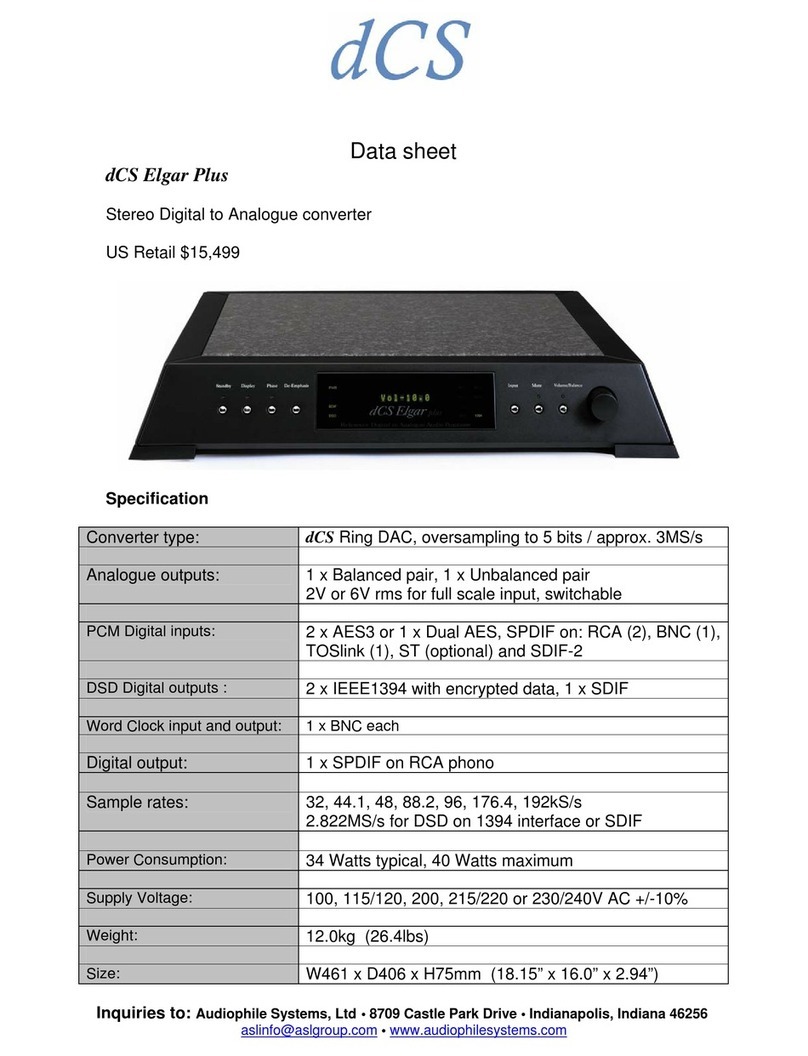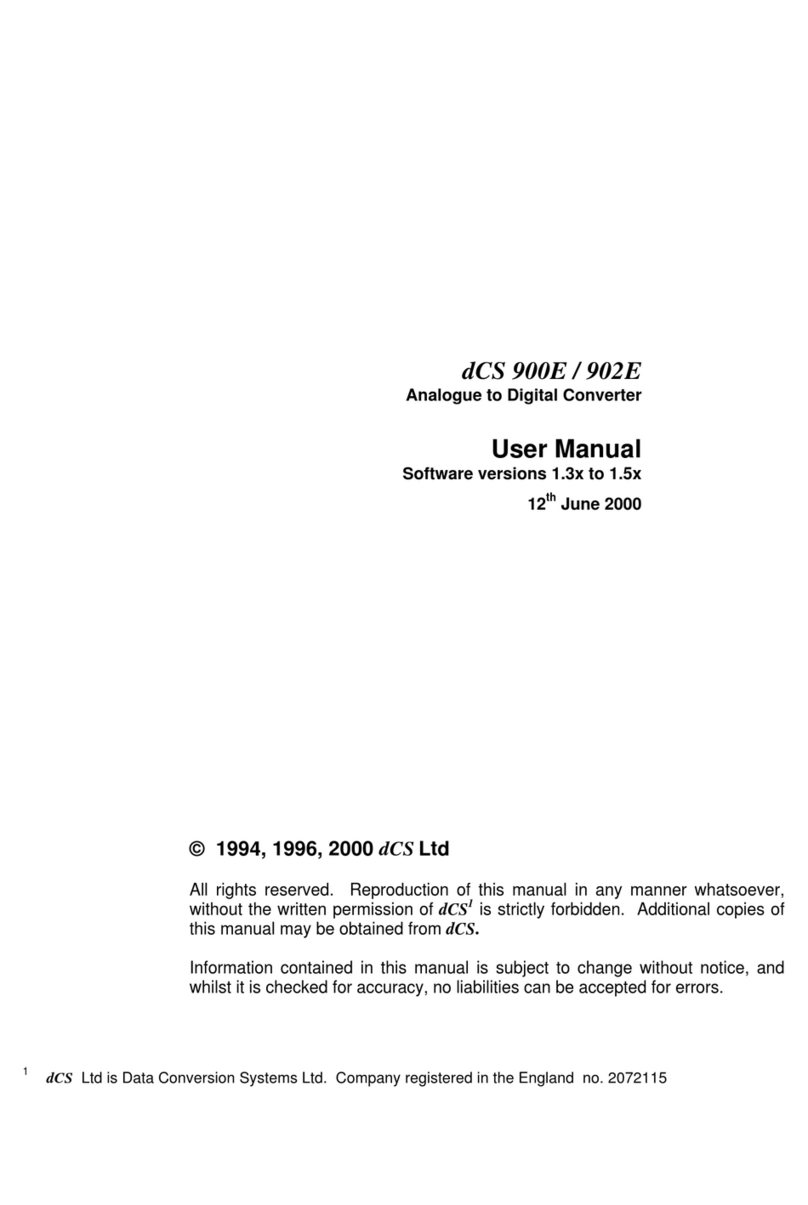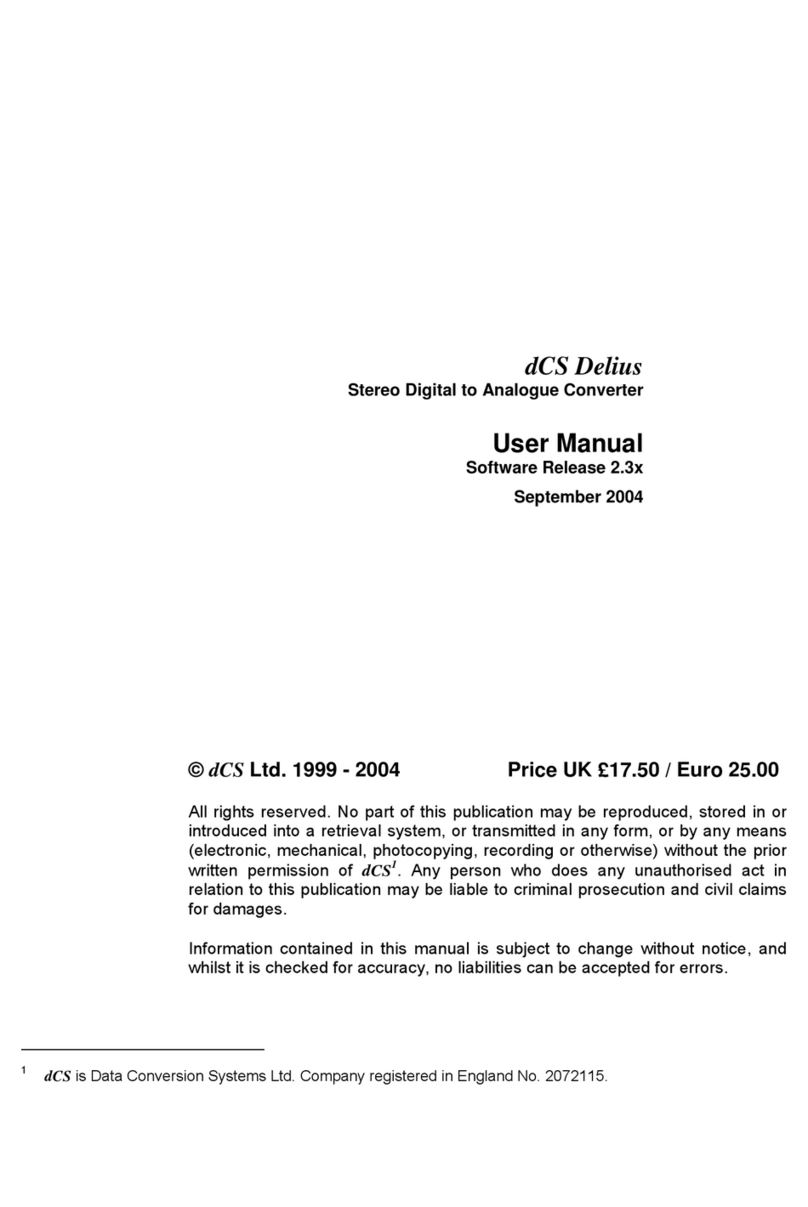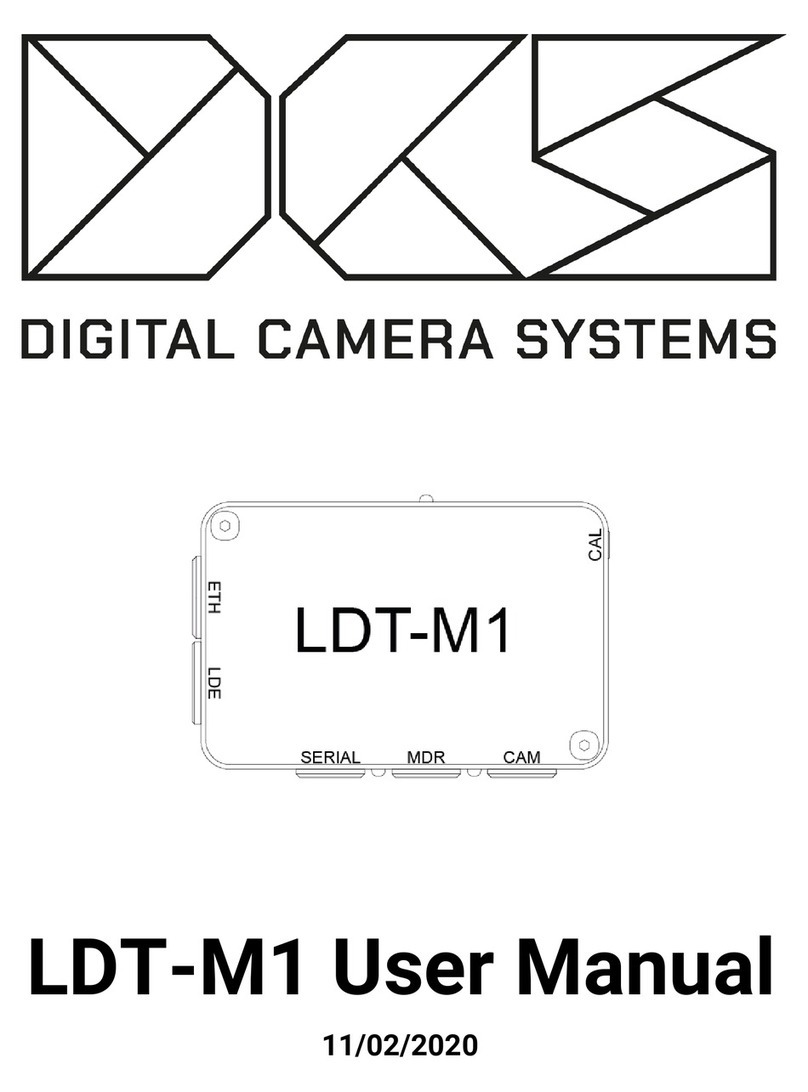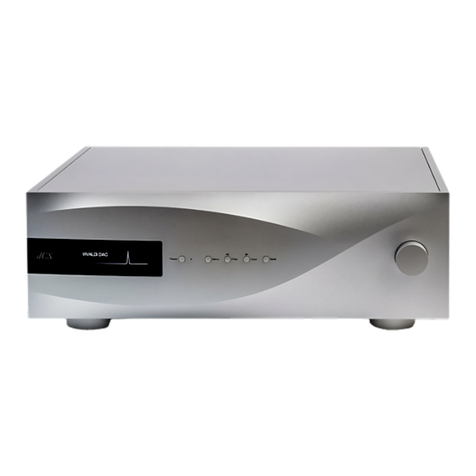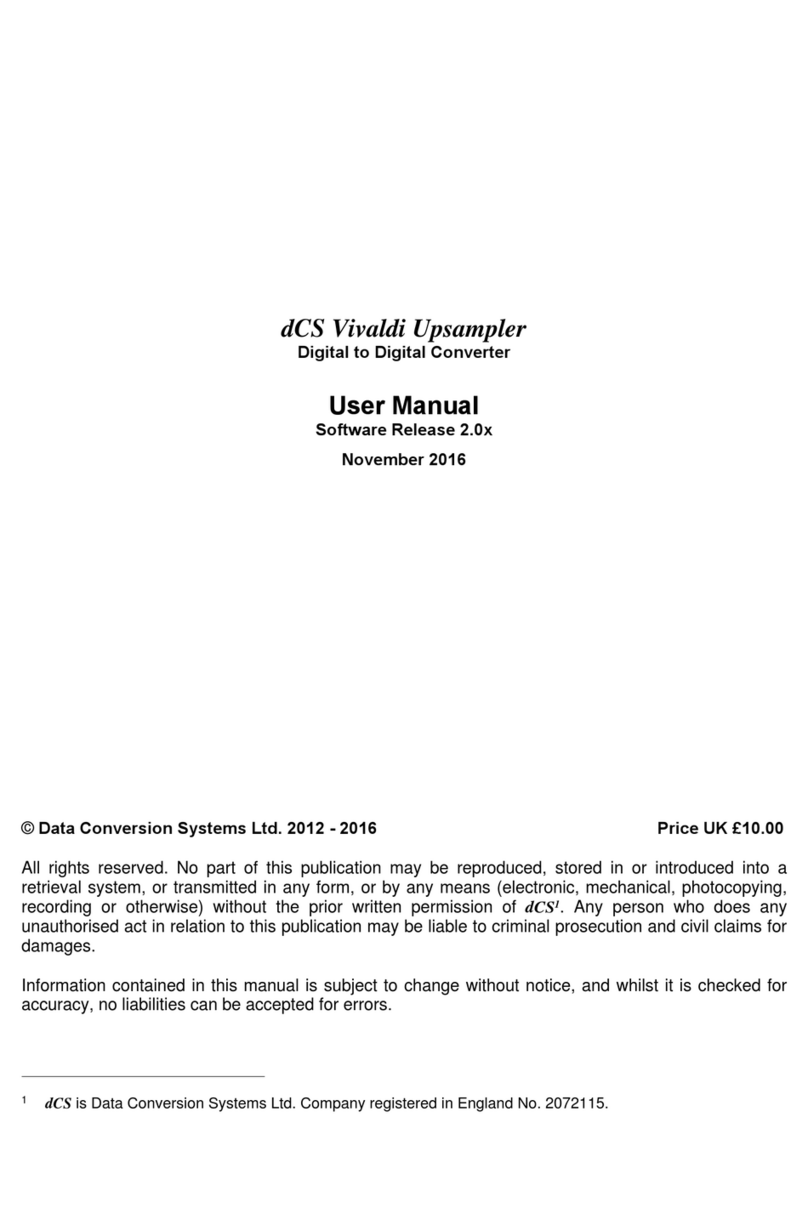
dCS Elgar Plus User Manual Manual for Software Issue 4.3x
dCS Ltd August 2005
English version web-site: www.dcsltd.co.uk
Step 1 – Selecting a Digital Input
Switch on the source equipment. If appropriate, load a disk / tape and set the
machine in PLAY mode to ensure it is generating a digital audio data stream.
Choose one of the following sections:
Connecting to a Single AES or SPDIF source
Most source equipment (such as CD transports, DVD players) is fitted with a
single wire digital output, usually on an RCA phono connector.
do this: Connect your source equipment to the matching input on the Elgar Plus rear
panel using a suitable cable.
do this: Press the Input button repeatedly until your chosen input is displayed on the
input indicator, to the right of the display. This will be either AES 1, AES 2,
RCA1, RCA2, TOS, ST or BNC.
The unit will lock to the source, displaying in sequence Locking, d xxx (the
sample rate) then the default display (probably 16/44, depending on the Disp
menu setting and the source format).
Connecting to a Dual AES Source x
do this: Check that your source equipment is capable of Dual AES operation.
do this: Connect the AES 1 (or AES A) output on your source equipment to the AES 1
input on the Elgar Plus rear panel and the AES 2 (or AES B) output to the
AES 2 input, using two XLR cables. Ensure the cables are not swapped.
do this: Press the Input button repeatedly until both AES 1 AND AES 2 input indicators
are lit.
The unit will lock to the source, displaying in sequence Locking, d xxx (the
BASE sample rate) then the default display (probably 24/192 depending on the
Disp menu setting and the source format).
Connecting to an IEEE 1394 DSD Source
do this: Check that your source equipment (probably a dCS SACD Transport or a dCS
Upsampler) is capable of DSD operation over a 1394 link, generates a 44.1kHz
wordclock and is set up correctly.
do this: Connect one 1394 output on your source equipment to one 1394 input on the
Elgar Plus rear panel. Also connect the wordclock output on your source
equipment to the Wordclock In connector on the Elgar Plus rear panel.
do this: Press the Input button repeatedly until the 1394 input indicator is lit.
The unit may display Wait ..., No-WClk or Search.., messages before finally
settling down to the source name (probably Verdi or Purcell). If necessary, use
the Input button to select the 1394 source you want to listen to. You may find
Elgar Plus settles more quickly if you set it to 1394 mode before setting the
source to DSD mode (or switching the source on).
Connecting to an SDIF/DSD Source
do this: Check that your source equipment is capable of SDIF PCM or DSD operation.
do this: Connect the CH1 output on your source equipment to the CH1 input on the
Elgar Plus rear panel and the CH2 output to the CH2 input, using two BNC
cables. Connect the Wordclock output on your source equipment to the
Wordclock In connector on the Elgar Plus rear panel. Ensure the cables are not
swapped.
do this: Press the Input button repeatedly until either the SDIF or DSD input indicators
(to the left of the display) are lit.













